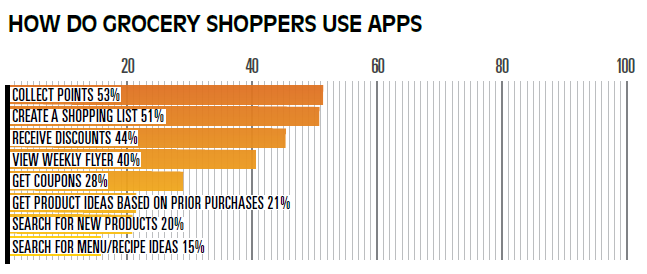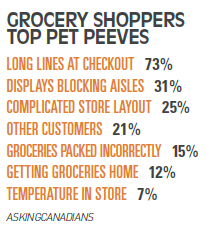 With several of Canada’s big grocers creating branded mobile apps over the past year, there is no question grocery shopping is getting more techie. But are consumers ready? And are apps really the answer to better customer service and sales?
With several of Canada’s big grocers creating branded mobile apps over the past year, there is no question grocery shopping is getting more techie. But are consumers ready? And are apps really the answer to better customer service and sales?
Before launching an app, it’s important to first look at every brand interaction through the lens of the customer. As a retailer, you have an opportunity to blow your customers away when they interact with your brand. But first you must know their expectations.
Mobile apps may be the hot thing, but according to new data from Delvinia’s AskingCanadians online research community, only 12% of consumers use a grocery app. But while adoption may be low, our research has found Canadians who use grocery apps do so extensively.
Of those shoppers that do use grocery apps, most use an app to collect points, while 51% use an app to create a shopping list, 40% view a weekly flyer, 21% look for grocery recommendations based on previous purchases and 20% search for new products. (See chart above.)
That just about covers most of the features included in apps launched recently by the big three grocers: Metro, Sobeys and Loblaw. But the fact remains, almost 88% of consumers aren’t using these apps at all. The question is why not?
Many of the consumers we surveyed said they simply don’t see a good reason to use a supermarket app. Overcoming such an objection and changing customer behaviour can be tough. But there are a few things that grocers can do to increase app adoption.
First off, the goal shouldn’t be to merely make a mobile app. The goal should be to create a better shopping experience on a smartphone. Grocers, or any retailers for that matter, need to understand how mobile fits into their customers’ path to purchase. How can new technology innovations such as iBeacon, near field communication and analytics, solve you customers’ problems?
Let’s go back to the data: Shoppers told us their biggest pet peeves about grocery shopping aren’t addressed by mobile apps. Long lineups at checkout lanes (73%), displays blocking the aisles (31%), complicated store layouts (25%) and having their groceries packed incorrectly (15%) are some of the biggest in-store grievances we heard from shoppers. (See chart below.)
 How can grocers help solve such shopping complaints? And can mobile be the solution? Indeed, yes.
How can grocers help solve such shopping complaints? And can mobile be the solution? Indeed, yes.
By taking a human-centric and insight-driven design approach—one that moves beyond the current features commonly found in today’s mobile apps—grocers can help to solve everyday customer peeves.
Take, for instance, the 15% of customers who say their groceries are packed incorrectly. Imagine if your store’s app could instruct shoppers on the best way to place their items on the checkout conveyor or into their shopping bags for improved, more efficient bagging.
Another frustration is long lineups. We know from our data that 70% of shoppers with a grocery app use that app right before visiting a store. What if the app told people how busy their preferred store was, and how long the lines were—before they even left the house?
Countless articles have been written about the great promise that mobile holds to capture and unlock customers’ data–location, social situation, tasks to be completed–all in real time during the shopping trip. While true, I suggest we spend more time solving real business and customer problems. Let’s focus on creating better mobile experiences, not simply more apps.